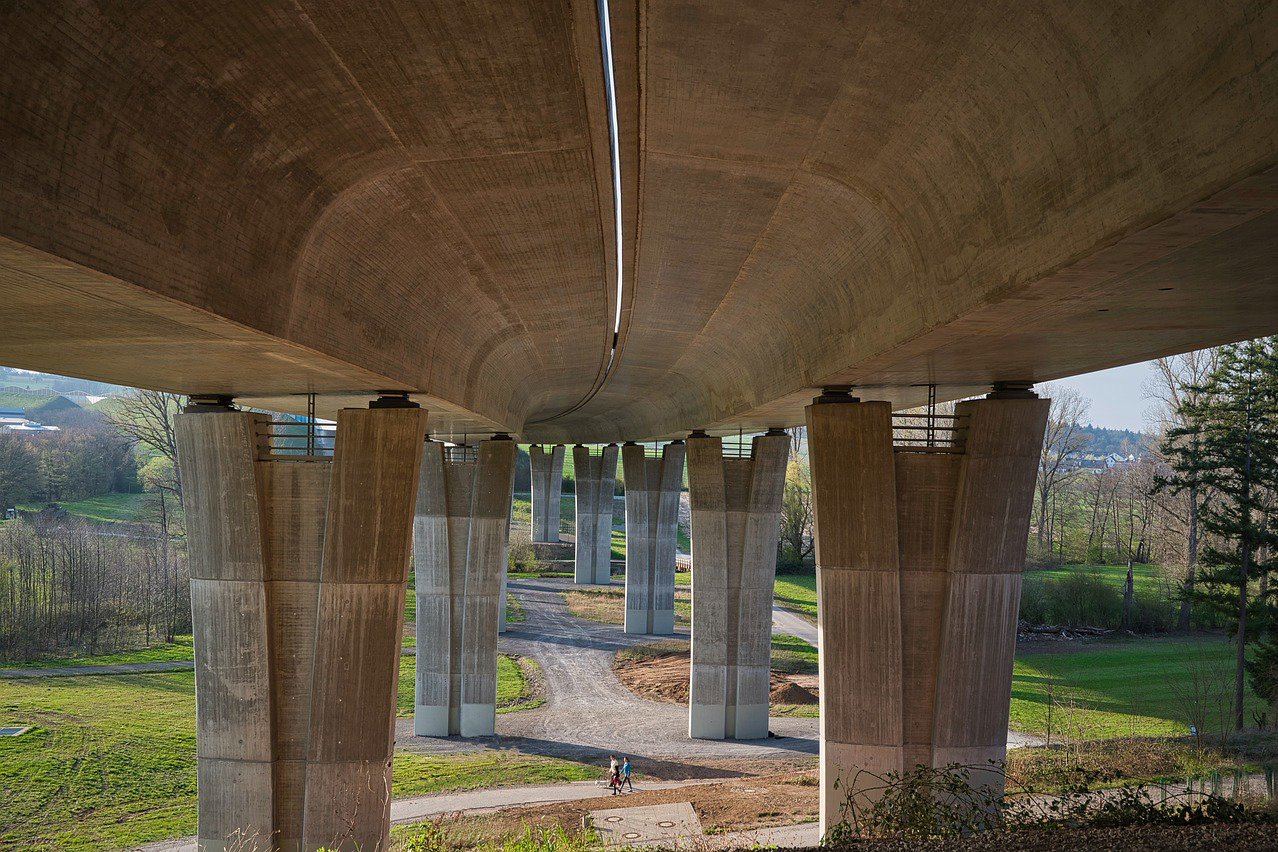
New additive manufacturing precosses for metal components
December 31, 2019
Beamforming in multi-element antennas at very high frequencies for the connected car
January 3, 2020Recently, a series of bridges have collapsed that were constructed over fifty years ago with reinforced and/or prestressed steel. The failures have been due to corrosion of the reinforcing bars. Corrosion leads to a progressive reduction in the resistance capacity of structures, an effect that is notable in aggressive environments, such as coastal and port areas. As a result, monitoring and maintenance plans exist to try to detect this phenomenon, protect the structures and assess how they impact the safety of constructions. However, the number of structures that are affected is large and the associated costs of maintenance, repair, reinforcement or demolition are also high and will increase as the structures age.
Today, high-performance (strength, durability) materials exist such as polymers reinforced with fibres of carbon, glass or basalt, among other materials, that are inherently resistant to corrosion. The use of these materials as reinforcement for concrete structures will enable the design and construction of new, high-performance durable structures (HPDS) with a longer life, which will reduce future costs of maintenance, strengthening or replacement.

Even though the use of fibre-reinforced polymers (FRP) as a strengthening material or internal reinforcement has been studied and applied to real cases, its use as active reinforcement in prestressed concrete structures is limited, mainly due to technological drawbacks, such as the lack of suitable anchorage systems, among other aspects.
In this context, the Analysis and Technology of Structures and Materials (ATEM UPC) group has started the project STRADURAVIUS, to establish the bases for designing pre-tensioned, high performance, durability and strength (HPDS) concrete structures, using FRP as active and passive reinforcement, and incorporating metallic fibres or not, to improve the performance of the concrete. The aim is to replace conventional steel reinforcement with FRP to avoid corrosion in aggressive environments and increase the durability and life span of structural elements.
A lack of corrosion of reinforcement provides an opportunity to redefine the design criteria of pre-stressed elements, to optimise them in general and ensure that the safety, functionality and durability requirements are met, which is one of the main objectives of this project. In addition, to achieve great mechanical performance or durability of the elements, high-performance concrete will be used, and appropriate structural forms and construction methods should be developed.
This will lead to a reduction in the use of raw materials, energy consumption and the weight of the structure, which is particularly important in prefabricated elements, in which the cost of auxiliary resources is considerable. An important aspect of the expansion and application of pre-stressed concrete elements containing FRP and fibres in aggressive environments is the evaluation of their real overall cost, which considers the material, environmental and social costs, through a life-cycle analysis.
The project will be concluded in 2021 and is part of the Spanish National Plan for Scientific and Technical Research and Innovation 2017-2020 and the Spanish National Plan for Research, Development and Innovation aimed at the Challenges of Society of the Spanish Research Agency.
Related Projects
- A team from the Bioinspired Oral Biomaterials and Interfaces (BOBI) research group at the Department of Materials Science and Engineering (CEM) of the Universitat Politècnica de Catalunya - BarcelonaTech (UPC) is taking part in the European project HYDROHEAL, which explores how to transform bone fracture treatment using smart and advanced biomaterials, aiming to reduce the risk of infection and implant rejection, as well as shortening fracture recovery times.
- Neurodegenerative diseases, such as Parkinson's disease, Alzheimer's, and age-related disorders, have been widely studied due to their significant impact on individuals and society. So far, these are incurable and debilitating diseases that lead to progressive degeneration and death of nerve cells, resulting in cognitive and mobility impairments. Tremors, mainly at rest, slowness of movement (bradykinesia), limb rigidity, and issues with gait and balance are typical motor disorders related to Parkinson’s disease. Additionally, due to progressive muscle atrophy, these issues can lead to falls, which in turn result in further complications and risks to quality of life.
- The Biomaterials, Biomechanics, and Tissue Engineering (BBT) Research Group at the Institute for Health Research and Innovation (IRIS) of the Universitat Politècnica de Catalunya – BarcelonaTech (UPC) is leading DYNAMIC, a project aimed at creating multifunctional, stimuli-responsive biomaterials that not only promote bone regeneration but also intelligently and effectively combat bacterial infections.
- 30/09/2024Project Headerrightno-repeat;left top;;auto20px A team from the Centre for Research in Biomedical Engineering (CREB) of the UPC and Sant Joan de Déu has created a new […]




